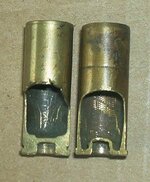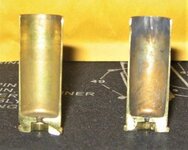Silver Lifetime
- Messages
- 43,501
- Reactions
- 113,278
1) I was talking about a 4" barrel too.Firstly - we are talking about a 4 inch barrel, not a 6 inch barrel and you'll find the fps is very different.
Secondly - ammo box velocity claims are often inaccurate.
Thirdly - I don't see anything I wrote refuted by anything you wrote, if anything, what I originally wrote is agreed with by what you wrote.
2) Give me a week or so and I will have the time to chrono some loads from my 329, but Buffalo Bore ammo actually measures the velocity of their loads in several different barrel lengths:
DANGEROUS GAME HEAVY 44 MAGNUM - Mono-Metal Pistol & Handgun Ammunition
DANGEROUS GAME HEAVY 44 MAGNUM - Mono-Metal Bullets Field Proven pistol and handgun ammo. Maximum firepower bullets. Best ammunition for pistols and handguns for sale. Buffalo Bore. Strictly big bore. Strictly Business.
www.buffalobore.com
HEAVY 10MM OUTDOORSMAN Pistol & Handgun Ammunition
HEAVY 10MM OUTDOORSMAN Field Proven Pistol and Handgun Ammo. Maximum firepower ammunition. Best Ammo for pistols and handguns for sale. Buffalo Bore. Strictly Big Bore, Strictly Business.
www.buffalobore.com
3) My point was that the .44 Mag does have significant advantages over the 10mm, regardless of barrel length. One advantage is its ability to handle heavier projectiles.
10mm 225gr:
➤ 1140 fps - Glock model 20 4.6-inch barrel
➤ 1175 fps - Colt Delta Elite 5-inch barrel
➤ 1201 fps - Para Ordnance 1911 with Nowlin 5-inch barrel
.44 Mag 265gr:
➤ 1,657 fps -- Marlin 1894, 18-inch barrel
➤ 1,431 fps -- US Arms Abilene, 7.5-inch barrel
➤ 1,421 fps -- Ruger Super Blackhawk, 5.5-inch barrel
➤ 1,372 fps -- S&W Mt. Gun, 4-inch barrel


















